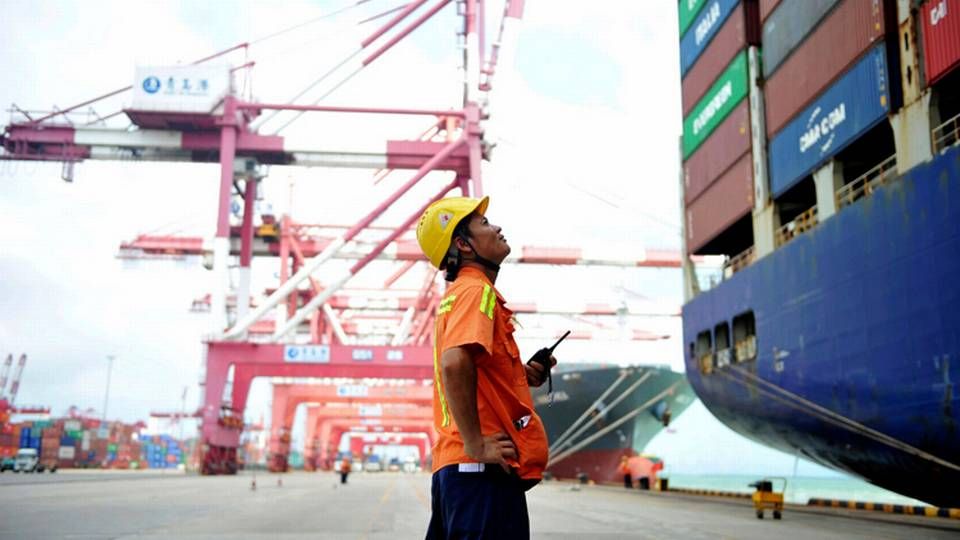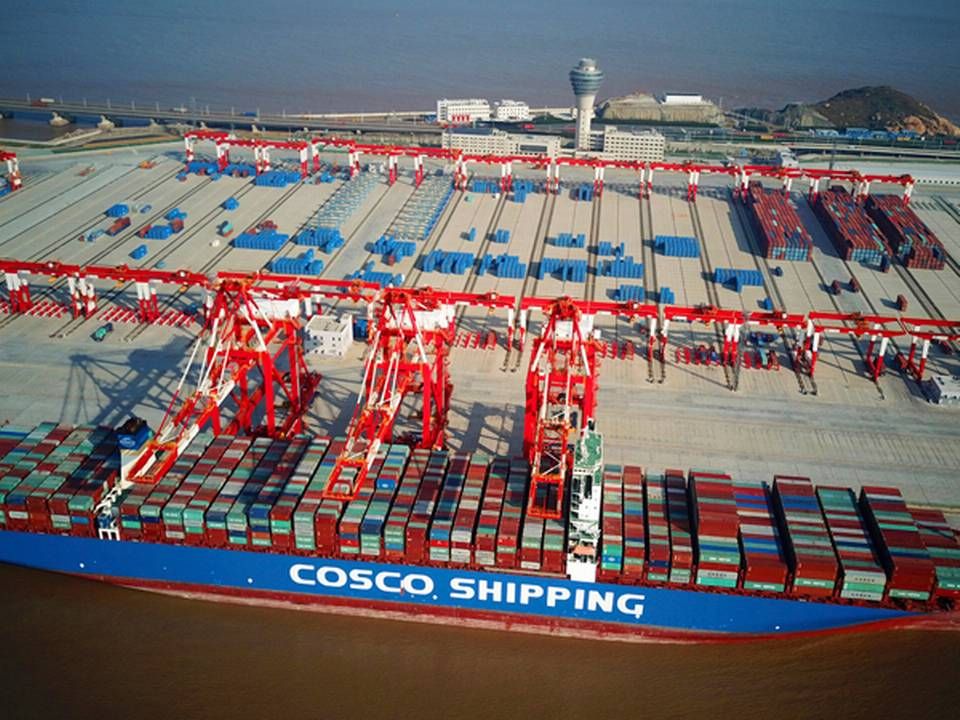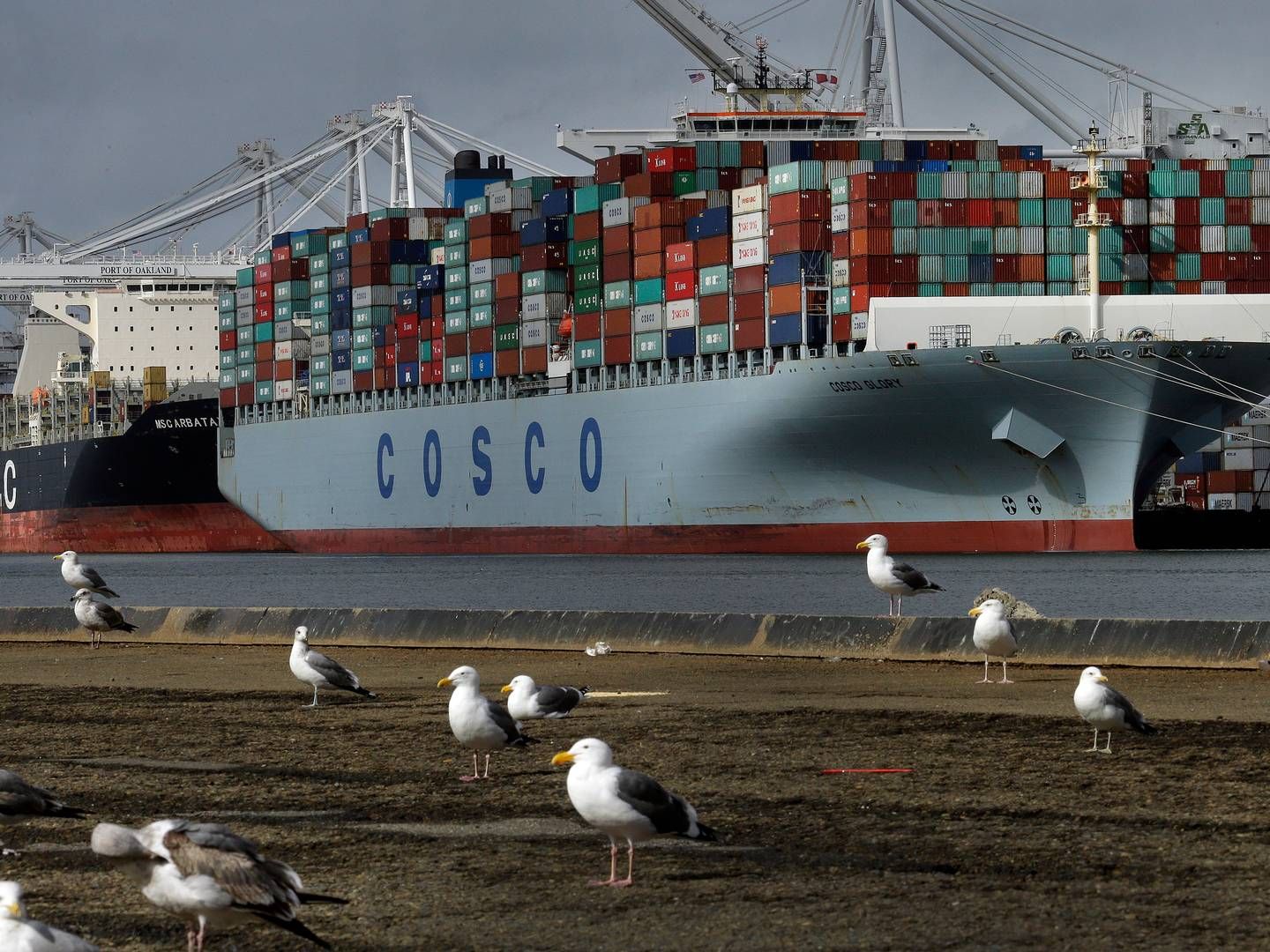Cosco's new vessels deemed biggest threat facing container shipping

SINGAPORE
Despite solid global growth and a surge in demand, the biggest liner shipping companies are on track for negative bottom lines for the rest of the year, says one of the container sector's premier analysts. European shipowners, especially Maersk, should keep a close eye on their Asian competitors.
"In short, the liner companies have not done a good enough job in benefiting as much as possible from the global growth. The challenge is still supply and demand, and until this balance is achieved, the problems will continue. Most of the liner companies reported deficits for the first quarter, and looking at all the key elements such as freight rates, volumes and oil price, this will likely also be the case for the half-year reports and ahead of 2019," Chief Analyst Tan Hua Joo of firm Alphaliner told ShippingWatch after his speech at the annual gathering of industry the Container Owners Association (COA) on Wednesday in Singapore.
And this situation is likely their own fault.
"Their lack of ability to control the capacity is the is the reason we're standing where we are today. There has been a total lack of market discipline. Supply is the major challenge, and this year we expect 1.4 million teu of new ship capacity, more than in the two previous years. So the liner companies' hunt for market shares has caused this situation," said Joo.
One player moving extra fast
As such, the argument that the consolidation in recent years has changed the sector's parameters does not hold true, he said. The situation is not made better by the fact that the number of ships being scrapped has plunged in the past year.
After a couple of fairly strong years, 2018 looks set to become very challenging for the sector. The crucial factor going forward will be the individual liner companies's growth strategy, said Joo. The biggest liner companies' capacity is growing steadily across the board, but this development is happening extra fast in one place in particular.
"The big story this year and in the years to come is Cosco. They are growing fastest among the biggest liner companies, even when not including their acquisitions. They have new ships underway, and counting the merger with OOCL, they are placed to overtake CMA CGM and could challenge the two biggest box carriers in the near future. Cosco is also expanding in markets such as Africa and South America, where the Chinese are traditionally not that strong but where they have made a significant effort this year," explained Joo.
Over the next two years, Cosco will deploy new ships for a combined capacity of 300,000 teu, which corresponds to the aggregate capacity of a medium-large liner company. Cosco is now four times larger than it was 20 years ago, and this development does not look set to end anytime soon.
According to Joo, Cosco is looking to challenge the European liner companies. Maersk Line is the only one of the biggest box carriers that has yet to order new ships, and this could be a risky move.
"It seems like Maersk is refraining, and they've said publicly that there are no plans to order new ships in the foreseeable future. I think this is a dangerous path to pursue, as many of their rivals – especially the Chinese – are gaining on them fast," he said.
English Edit: Daniel Logan Berg-Munch
Related articles
Cosco's acquisition of Hong Kong carrier nears deadline
For subscribers
Liner companies probably want to forget the first quarter
For subscribers


















